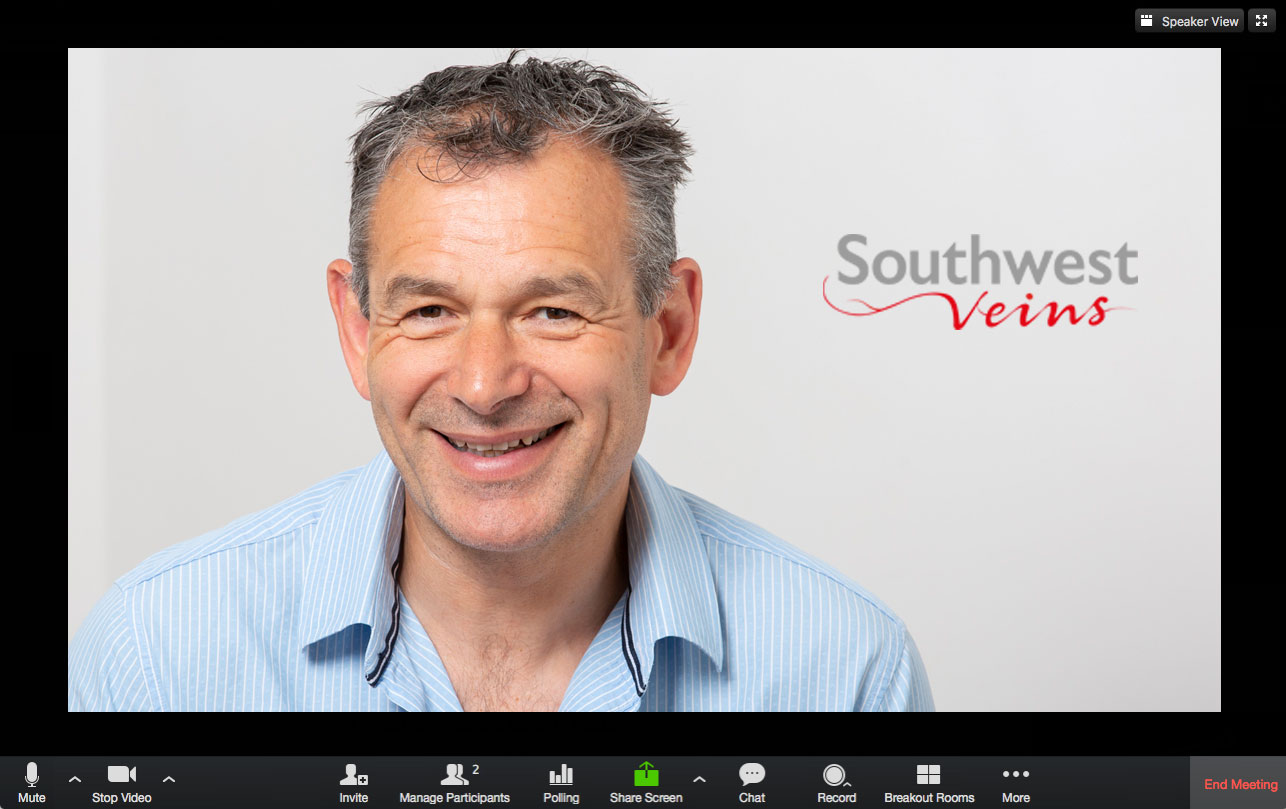Varicose vein foam sclerotherapy treatment aftercare – what to expect
I will apply a light compression bandage as far as the knee and then strips of elastic adhesive compression for the treated thigh areas and ask you to remove these after 48 hours. They will soak off in the bath and this process will be easier for men if they have shaved their thigh prior to the procedure.
Foam sclerotherapy triggers an inflammatory response ultimately leading to the destruction of the vein endothelium which is the lining of the vein wall. This inflammatory response is known as phlebitis and is the mode of action of the treatment rather than a complication.
As with all inflammation, phlebitis is manifested by redness, swelling, heat, localised tenderness and pain. There will also be lumpiness within the veins caused by localised thrombosis. The expected change is for the veins to go from being soft and lumpy to temporarily hard and lumpy. This process should not be confused with infection and there is no place for antibiotics in its management. The exact pattern of features is very variable between different patients and even different treatment sessions. The inflammatory process always settles and can wax and wane for a few days a few weeks after treatment.
Aftercare Explained Video – 49 seconds
A good sign that the treatment has been successful is that any symptoms such as aching or itching from the varicose veins disappear immediately after treatment. The symptoms are replaced however by the localised pain and tenderness over the treated veins which gradually resolve with time.
In 90% of patients there is no disruption to the ability to continue normal activities and indeed we encourage people to be back at work in the normal fashion the next day.
The natural progression of the inflammatory process is that the localised tenderness and pain will settle first, usually over a few days. Next the hard lumps within the treated veins will gradually shrink down and flatten off over a period of weeks. As part of the inflammatory reaction some skin staining is often observed. This fades with time but can take quite a number of months to fully disappear.
In 10% of people the levels of pain and discomfort are greater and enough to cause some disruption to the resumption of normal activities for a few days at least.
| 1 | Application of ice packs. |
| 2 | Application of non-steroidal creams. |
| 3 | The wearing of class-II compression garments or flight socks. |
| 4 | Anti-inflammatory medication. |
| 5 | In very severe cases aspiration of localised blood clots under local anaesthetic can be attempted; in my experience this is very rarely required. |
Will my varicose veins come back?
Varicose veins treated by any modality have a tendancy to come back (i.e. recurrent varicose veins) over the very long term (decades). The results from foam sclerotherapy are as good as those from open surgery with a 15% recurrence rate after 5 years. In other words after successful treatment there is an 85% chance of having a leg free of major varicose veins at 5 years.
FAQs…

Video appointments
Book your FREE initial consultation to discuss your varicose vein removal via video. This enables us to meet, virtually, face to face and for us to diagnose your condition and answer any specific questions.
